For the 2025 school year, there is 1 public elementary school serving 211 students in Idaho Virtual High School Inc. School District. This district's average elementary testing ranking is 3/10, which is in the bottom 50% of public elementary schools in Idaho.
Public Elementary School in Idaho Virtual High School Inc. School District have an average math proficiency score of 27% (versus the Idaho public elementary school average of 44%), and reading proficiency score of 52% (versus the 54% statewide average).
Minority enrollment is 21% of the student body (majority Hispanic), which is less than the Idaho public elementary school average of 27% (majority Hispanic).
Overview
This School District
This State (ID)
# Schools
4 Schools
597 Schools
# Students
545 Students
214,917 Students
# Teachers
29 Teachers
12,168 Teachers
Student : Teacher Ratio
19:1
19:1
District Rank
Idaho Virtual High School Inc. School District, which is ranked within the bottom 50% of all 172 school districts in Idaho (based off of combined math and reading proficiency testing data) for the 2021-2022 school year.
The school district's graduation rate of 40-44% has increased from 25-29% over five school years.
Overall District Rank
#120 out of 173 school districts
(Bottom 50%)
(Bottom 50%)
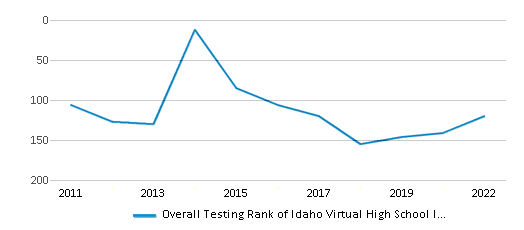
Math Test Scores (% Proficient)
19%
42%
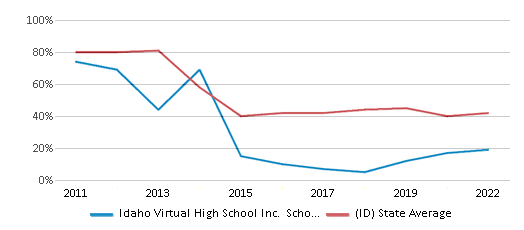
Reading/Language Arts Test Scores (% Proficient)
56%
55%
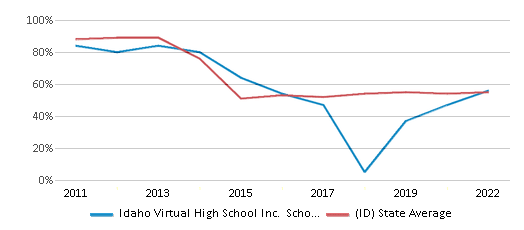
Science Test Scores (% Proficient)
35-39%
41%
Graduation Rate
40-44%
80%
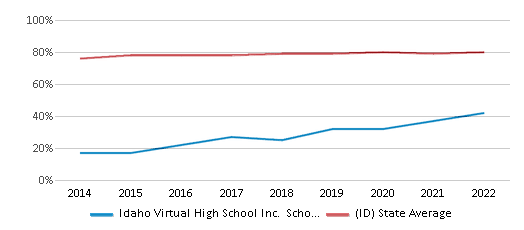
Students by Ethnicity:
Diversity Score
0.36
0.43
# American Indian Students
3 Students
2,540 Students
% American Indian Students
1%
1%
# Asian Students
3 Students
2,319 Students
% Asian Students
1%
1%
# Hispanic Students
79 Students
43,258 Students
% Hispanic Students
14%
20%
# Black Students
8 Students
2,402 Students
% Black Students
1%
1%
# White Students
428 Students
156,137 Students
% White Students
79%
73%
# Hawaiian Students
n/a
745 Students
% Hawaiian Students
n/a
n/a
# Two or more races Students
24 Students
7,542 Students
% of Two or more races Students
4%
4%
Students by Grade:
# Students in PK Grade:
-
3,386
# Students in K Grade:
24
20,407
# Students in 1st Grade:
24
22,594
# Students in 2nd Grade:
24
23,529
# Students in 3rd Grade:
24
23,643
# Students in 4th Grade:
24
23,790
# Students in 5th Grade:
24
24,041
# Students in 6th Grade:
24
24,172
# Students in 7th Grade:
21
18,745
# Students in 8th Grade:
22
18,797
# Students in 9th Grade:
40
3,150
# Students in 10th Grade:
67
2,904
# Students in 11th Grade:
109
2,955
# Students in 12th Grade:
118
2,804
# Ungraded Students:
-
-
District Revenue and Spending
The revenue/student of $9,020 in this school district is less than the state median of $10,185. The school district revenue/student has stayed relatively flat over four school years.
The school district's spending/student of $6,794 is less than the state median of $9,364. The school district spending/student has stayed relatively flat over four school years.
Total Revenue
$5 MM
$3,215 MM

Spending
$4 MM
$2,956 MM
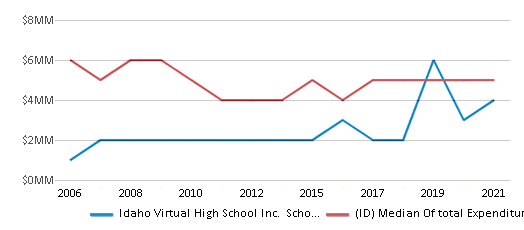
Revenue / Student
$9,020
$10,185
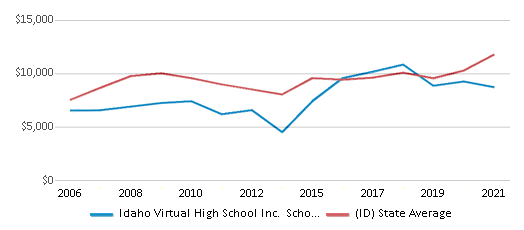
Spending / Student
$6,794
$9,364
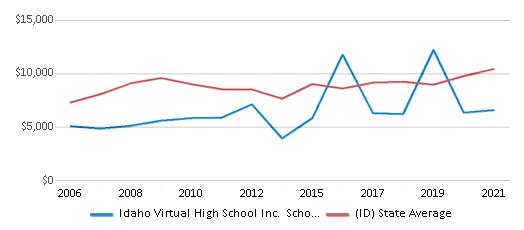
Best Idaho Virtual High School Inc. School District Public Elementary Schools (2025)
School
(Math and Reading Proficiency)
(Math and Reading Proficiency)
Location
Grades
Students
Rank: #11.
Richard Mckenna Charter School - Montessori
Charter School
(Math: 25-29% | Reading: 50-54%)
Rank:
Rank:
4/
Bottom 50%10
1305 East 8th North
Mountain Home, ID 83647
(208) 250-2347
Mountain Home, ID 83647
(208) 250-2347
Grades: K-8
| 211 students
Recent Articles

Year-Round Or Traditional Schedule?
Which is more appropriate for your child? A year-round attendance schedule or traditional schedule? We look at the pros and cons.

Why You Should Encourage Your Child to Join a Sports Team
Participating in team sports has a great many benefits for children, there is no doubt. In this article you will learn what those benefits are.

White Students are Now the Minority in U.S. Public Schools
Increasing birth rates among immigrant families from Asia and Central and South America, combined with lower birth rates among white families, means that for the first time in history, public school students in the United States are majority-minority. This shift in demographics poses difficulties for schools as they work to accommodate children of varying language abilities and socio-economic backgrounds.





